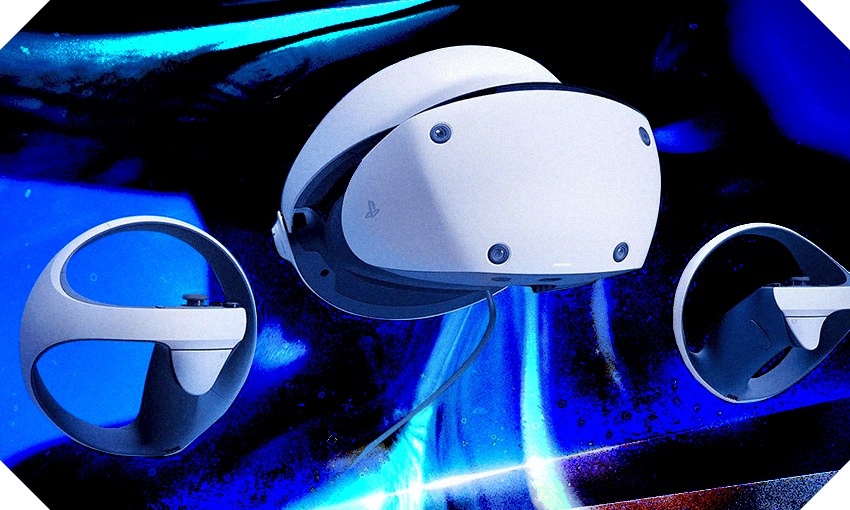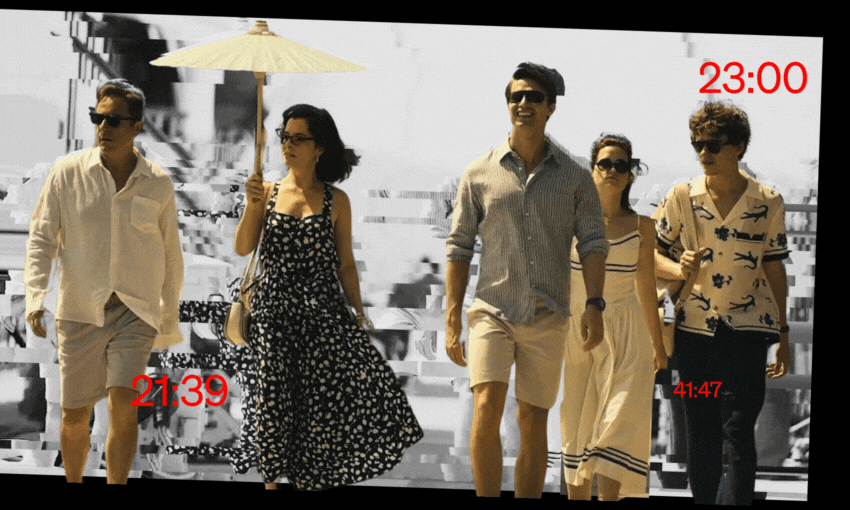VR gaming has come a long way with the new PSVR2 console – but is it worth putting down the controller and putting on a helmet for?
When it comes to virtual reality, I remain something of a luddite. My past experiences with this form of gaming have mostly led to nausea, headaches and physical exhaustion. This isn’t necessarily all VR’s fault – as a person who thinks of gaming as being a very sedentary activity, and an artform where active engagement is limited to the hands and sometimes the brain, I accept my share of the blame.
Still, I approached the Playstation VR2 (PSVR2) with some trepidation. Of course it’ll be better than the first one, just as the PS2 was better than the PS1. But would it finally make VR a necessary part of gaming, and not just a novel nice-to-have?
My first impression: this is definitely the easiest time I’ve had with a VR console. While it still takes some time to set up, with a non-ideal amount of cables and menus to go through, once the setup is done, it’s done (and to be fair, it’s not really more arduous than setting up an actual console, except most consoles are not worn on your person).
In all other areas, the specs of the PSVR2 are a massive improvement on the first. The controllers are easier to use, the helmet is much lighter (even including a bit of ventilation) and it now includes eyetracing, which allows the console to track exactly where you’re looking at every moment. There is no onboard audio, however, so you either have to use headphones or rely on whatever sound system is attached to the console.
The most crucial thing about the PSVR2 is that it allows a dynamic space – so if you don’t have the necessary space to use it to its full potential, you can still use it. As VR continues to develop, this aspect will be more and more necessary – you can only reach so much audience if you require a certain amount of space, let alone a player to be able to navigate that space easily and without strife.
The game I chose reintroduce myself to VR with was Altair Breaker, which is billed, correctly, as a “sword fighting experience”. You swing a sword, you hit the thing in front of you, with some combo variations. It’s as close to swinging a sword as I ever care to get in my life, and it feels as good as it’ll probably ever feel, too. It’s here that the immersion of VR really appeals – feeling the vibrations as you connect a hit with an enemy is undeniably addictive, even if the actual gameplay gets pretty repetitive after a while.
The flagship game of this console is Horizon: Call of the Mountain, a spinoff of the popular Horizon franchise that focuses around the two key joys of that series: climbing big mountains and shooting big things with arrows. The story, which only slightly overlaps with the series, is mostly perfunctory, which works to the game’s favour; if you know the franchise, you’ll appreciate it, and if you don’t you won’t care – there’s things to climb and arrows to shoot.
Both aspects of the gameplay feel great, and are about as engaging as I can imagine VR being. Neither lends itself well to long gameplay sessions, and I found myself needing to take the helmet off after half an hour to re-engage with the real world a bit (something that I can imagine would become less and less necessary the more time I spent in the helmet).
Call of the Mountain wasn’t the best time I had in the console, but it was the one that gave me the most appreciation of how far the tech has come. Just like Altair Breaker is the closest I can imagine coming to swinging a sword, Call of the Mountain is the closest I can imagine coming to mountain climbing and firing a bow, and the capabilities of technology to bring people closer to previously unattainable experiences is hard to overrate.
Strangely, the game that appealed most to me was Dyschronia: Chronos Alternate, a visual novel set in a city where dreams are used to predict when and where crimes happen (so Minority Report if it was a lot more anime). It’s not the sort of game that I can imagine being a huge hit – it’s a visual novel, and a horror – but for a genre that can often feel even more remote than actually reading a book, it again showed me the capability of what VR can do. It can bring a tired genre alive, bridging the gap between the screen and the player. Although, fair warning: horror in a VR set is really, viscerally terrifying!
I still have some reservations around VR gaming, however. It’s not that the tech isn’t there, and it’s not even that the games aren’t there. If you want to feel like you’re swinging a sword around, it’s easier than ever (though not necessarily less expensive) and more comfortable. But I have yet to have an experience with a game using a VR headset that I felt really necessitated the use of VR; basically, it still feels like a gimmick.
I play games to have fun, yes, and I even play games for escapism, but I’m yet to play a game in which VR felt necessary. There’s no doubt that VR has had its killer apps – the games that make a crowd rush out and buy a console solely so they can play that one game – namely Beat Saber and Half-Life: Alyx – but they still feel like niche experiences. If the PSVR2 catches on, I can see the Horizon game catching on in a similar way, but it doesn’t change my perception that VR remains oddly niche.
Niche is not a bad thing, of course, and nor is it something that is insurmountable. This console is already leaps and bounds ahead of its predecessor, and it’s only at the start of its life cycle. In a year, or maybe even less than that, I can see it having a killer app that finally sees more than a niche group of gamers engaging with VR. Until then, it’ll take something special – or super weird – for me to put down the controller and put the helmet back on.
The PSVR2 is available in stores now.



